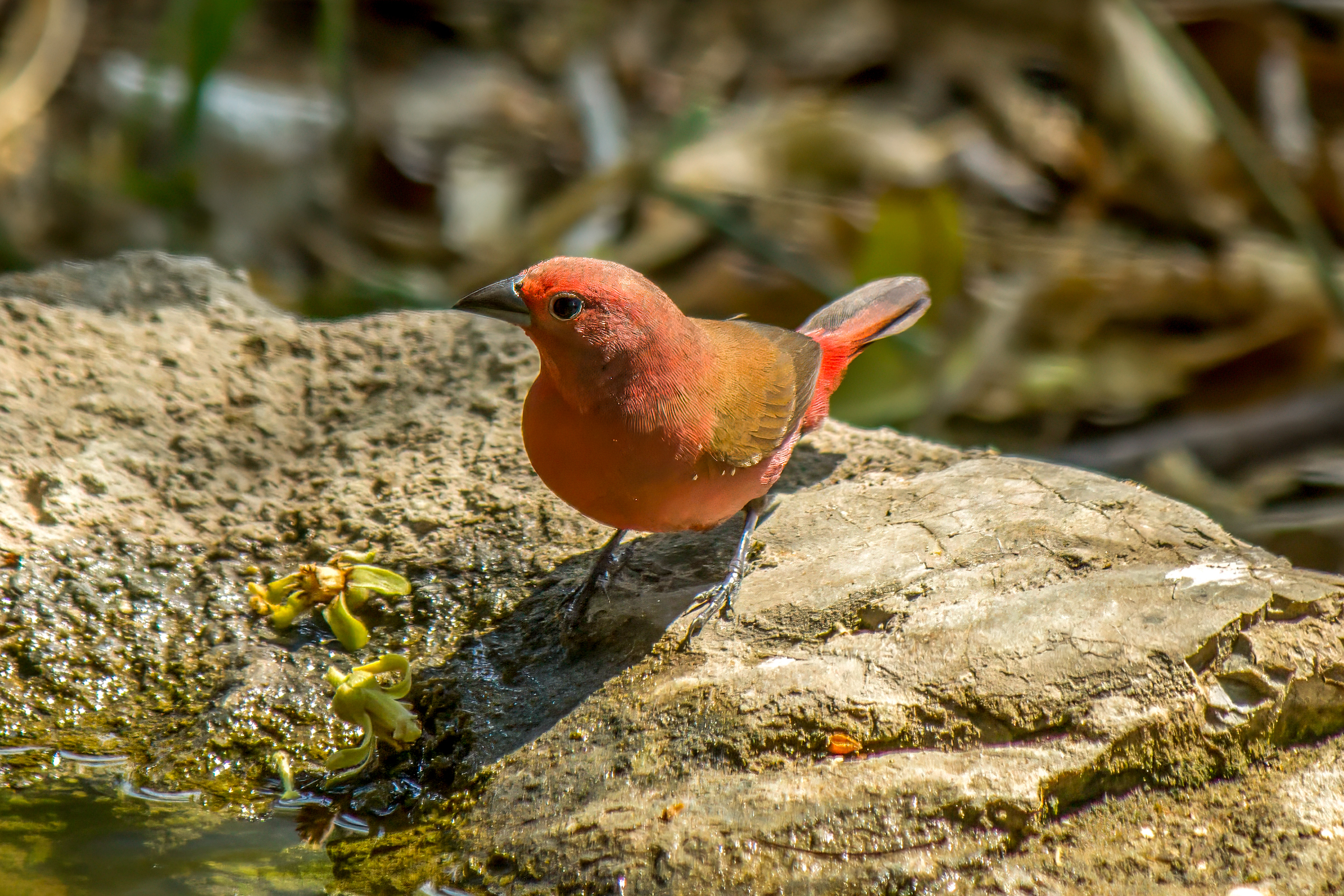African Firefinch
(Lagonosticta rubricata)
Description
The African firefinch or blue-billed firefinch (Lagonosticta rubricata) is a common species of estrildid finch in sub-Saharan Africa. It grows to a length of 10-11 cm (4-4.5 in). The male is mostly red with brown wings, and the South African subspecies L. r. haematocephala has a greyish backside and crown (see photo above). Undersides of wings and tail-side of the belly are black. Females and juveniles are duller in appearance with less red and more brown. Only adults have white spots on the sides. The similar Jameson’s firefinch (Lagonosticta rhodopareia) is not as bright red and has a more pinkish appearance. The Jameson’s firefinch has no grey backside or crown in South Africa, making it easier to distinguish the two here.
Diet & habitat
The African firefinch is found in numerous habitats, such as subtropical and tropical forests, drier woodlands, and grasslands. It can also be found in gardens and parks. Diet consists mainly of seeds, but it will also feed on insects during the breeding season. It forages on the ground in pairs or in small family groups.
Nesting
The nest is built solely by the male as a ball with a side-entrance. It is made of long dry grass and lined with fresher grass (and sometimes feathers) on the inside. It is typically built and hidden amongst grass and vegetation 0.5-2 m (1 ft 8 in – 6ft 7 in) above ground. The female lays 2-5 eggs which both parents incubate for 11-12 days. The young are fed by both sexes until they leave the nest after 14-19 days. They are dependent on their parents for another 10 days or so.
Status
The African firefinch is common within its large area of distribution and does well in both human and natural habitats. It is not threatened and is listed as least concern on the IUCN Red List.





